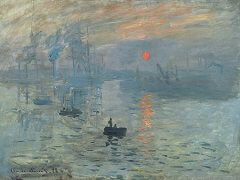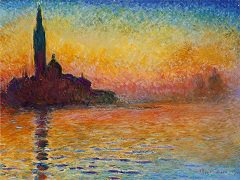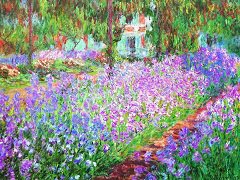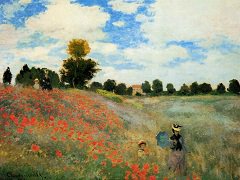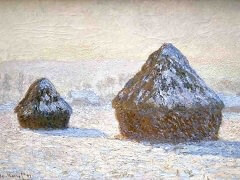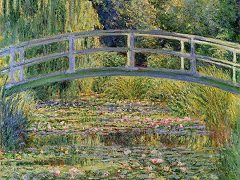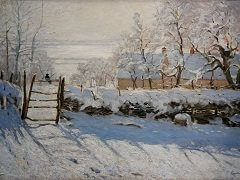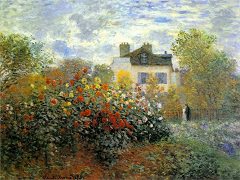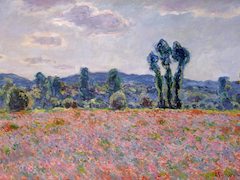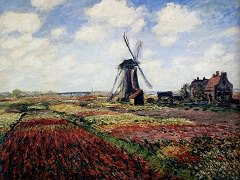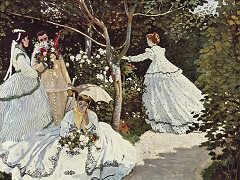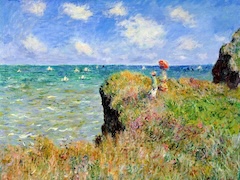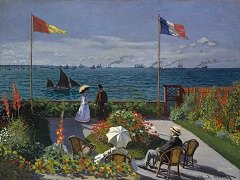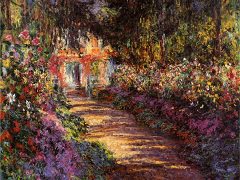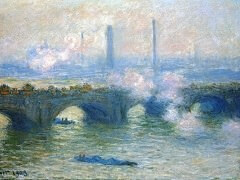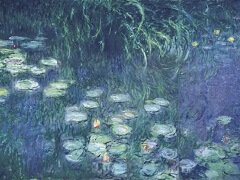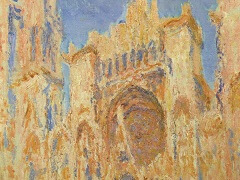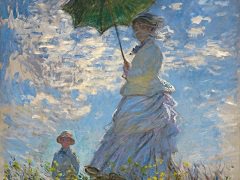Claude Monet's impact on Vincent van Gogh
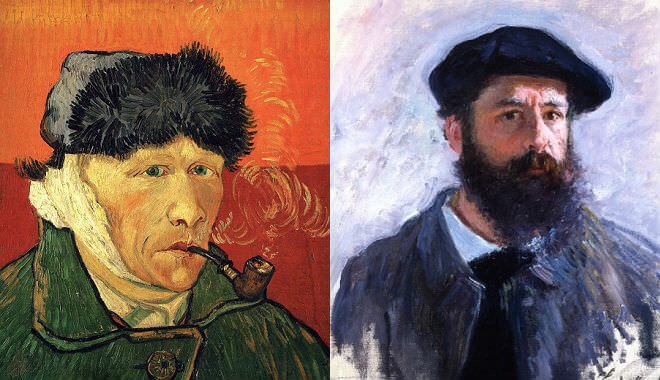
The appearance of Vincent van Gogh's art was transformed by his experience of French Impressionist painting. It was the work of the Impressionists, who sought to capture the transient effects of color and light, that encouraged Van Gogh to abandon the sombre palette of his Dutch period canvases and to adopt the rich, vibrant color range of his most celebrated works. However, in crucial ways the aims of his art remained very different. For Van Gogh, color in painting was essentially a vehicle for emotional expression as well as a means of conveying his visual experiences of the world around him. Van Gogh discovered Impressionism and began to explore its implications during the two years he spent in Paris, from late February 1886 to February 1888. For him, the quintessential Impressionist painter was always Claude Monet. It may seem surprising that he knew little about the Impressionists and their manner of painting prior to his arrival in Paris in 1886. He had visited the city briefly in May 1873, attending that year's Salon exhibition, and spent time working in the Paris gallery of the art dealer Adolphe Goupil in the autumn of 1874 and again between May 1875 and March 1876. He thus narrowly missed being in Paris for the Impressionists' first two group exhibitions, in 1874 and 1876, and the auction sale that they organized in March 1875. The group and their activities were only of interest to a small minority in the art world. Goupil at that date was specializing in academic genre paintings of peasant scenes and fashionable bourgeois life, but Van Gogh's tastes before he became an artist led him more towards the work of painters of peasant subjects such as Jean-François Millet and Jules Breton and the landscape paintings of the artists who worked in and around the Fontainebleau Forest.
In a letter of March 1876 Vincent van Gogh mentions buying etched reproductions of works by Millet from the dealer who specialized in paintings of this type, Paul Durand-Ruel, and describes the other etched reproductions that were on sale at his gallery. These were part of a series of three hundred etchings of paintings, published by the dealer between 1873 and 1875, which included a very small number after works by Monet, Camille Pissarro and Georges Seurat, many of whose canvases were in Durand-Ruel's stock at that date. But there is no indication that the dealer had any of their paintings on view when Van Gogh visited, and there was nothing about the black-and-white etched reproductions of their works that would have particularly attracted his attention. Nor is there any hint that he was aware of the preparations for the second Impressionist group exhibition, which opened at Durand-Ruel's gallery three days after his visit - on the day of his departure from Paris.
By 1886, the Paris gallery for which Theo worked had been renamed Boussod, Valadon & Cie, following the retirement of its founder Adolphe Goupil. The new management looked more favourably on recent developments in painting, and Theo was permitted to purchase a small number of paintings by the leading Impressionists. Only one of these, a canvas by Sisley, was still in the gallery when Van Gogh arrived in Paris. At this stage Theo did not, it seems, have any direct personal contact with the Impressionist painters.
Van Gogh's first extensive exposure to Impressionist paintings came at two exhibitions in the spring and summer of 1886: the eighth and final Impressionist group exhibition, which ran from mid-May to mid-June, and the fifth Exposition Internationale organized by the dealer Georges Petit, from mid-June to mid-July. At the former, he would have seen recent pastels of bathing women by Edgar Degas, together with the first appearance of Neo-Impressionist works, executed in small 'points' of varied colour, by Georges Seurat, Paul Signac, Pissarro and others. Petit's show included recent works by Pierre-Auguste Renoir and Monet. Van Gogh's later memory of these initial experiences shows just how difficult he found it to assimilate modes of painting that were so startlingly different from anything he had seen before. A year later, he wrote to his sister Willemien:
People have heard of the Impressionists, they have great expectations of them... and when they see them for the first time they are bitterly, bitterly disappointed and find them careless, ugly, badly painted, badly drawn, bad in colour, everything that's miserable. That was my first impression, too, when I came to Paris [...]."
However, by the autumn of 1886 Van Gogh was beginning to find some value in their work, writing to the English painter Horace Mann Livens:
In Antwerp I did not even know what the Impressionists were, now I have seen them and though not being one of the club, yet I have much admired certain Impressionist pictures - Degas, nude figure - Claude Monet, landscape."
In the same letter, he also wrote of having the chance, once more, to study the work of Eugene Delacroix.
Van Gogh did not specify which of Monet's landscapes he had admired, but among those shown in Petit's exhibition were two of the latter artist's Tulip Fields, which would undoubtedly have attracted Van Gogh's attention. However, comparison of these works with Van Gogh's landscapes of 1886 highlights the contrasts between the two. Monet's intense color and elaborately wrought, heavily impasted paint surfaces are utterly unlike the muted tonality and simple, direct execution of Van Gogh's paintings.

